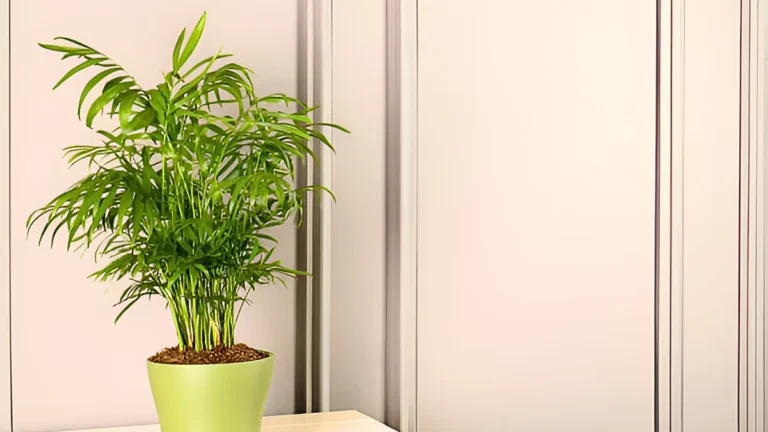The Parlor Palm, or Chamaedorea elegans as it is scientifically named, is a well-liked houseplant that is appreciated for its sophisticated look and little upkeep. It comes from the southern Mexican and Guatemalan rainforests, where it grows best in warm, humid conditions. For this reason, it is a great plant to grow inside.
How to grow parlor palm:
- To avoid waterlogging, which might result in root rot, choose a pot with drainage holes, and make sure the potting mix drains well. Peat moss, perlite, and sand combined are a good combination.
- When planting numerous palms in one pot, be sure to leave enough space for growth and place the first palm at its original depth.
- Put your parlor palm in an indirect, well-lit area. Although it can withstand low light, it grows well in strong, indirect light. Leaf scorching can be possible in direct sunlight.
- Higher humidity is preferred by parlor palms. Frequently mist the leaves or apply a humidity tray.
- Keep interior temperatures between 18 and 27°C (65 and 80°F). Stay away from chilly drafts and abrupt temperature swings.

How to care for parlor palm:
- Keep the soil wet but not saturated. Water the soil when it appears to be the top inch dry.
- Watering once a week is usually plenty, however the interior climate and season can affect this.
- During the spring and summer growing seasons, fertilize your parlor palm once a month with a half-strength solution of a balanced, water-soluble fertilizer. Cut back on fertilizer in the winter and fall.
- To maintain the health and aesthetic appeal of the plant, remove any yellow or brown fronds.
- Periodically wipe the leaves to maintain their luster and health by removing dust.
- Every two to three years or when it starts to get root-bound, repot your parlor palm. Select a pot that is one size bigger than the one you have now, and add fresh soil.
- Seek out mealybugs, scale insects, and spider mites. Neem oil or insecticidal soap are good treatments for infestations.
Conclusion:
Parlor palms demand careful consideration when it comes to light, humidity, watering, and general upkeep. Your parlor palm can flourish and bring a touch of refinement to your interior area if you give it the proper environment and maintenance.
Certainly! If you’d like to learn more, please consider following our WhatsApp Channel: Harvest Gardening
A frequently asked questions:
Q1: Are Parlor Palms safe for pets?
A1: Parlor Palms are a pet-friendly option for homes with dogs or cats since they are non-toxic to animals.
Q2: Can Parlor Palm flowers tolerate low light conditions?
A2: Yes, parlor palm flowers thrive in low light, which makes them perfect for inside spaces with little natural light. They do, however, also adjust well to indirect, stronger light.
Q3: My Parlor Palm’s growth is very slow. What could be the reason?
A3: Parlor palms may develop slowly as a result of inadequate light or nutrition. During the growing season, fertilize the plant once a month with a balanced, water-soluble fertilizer and place it in bright, indirect light.

